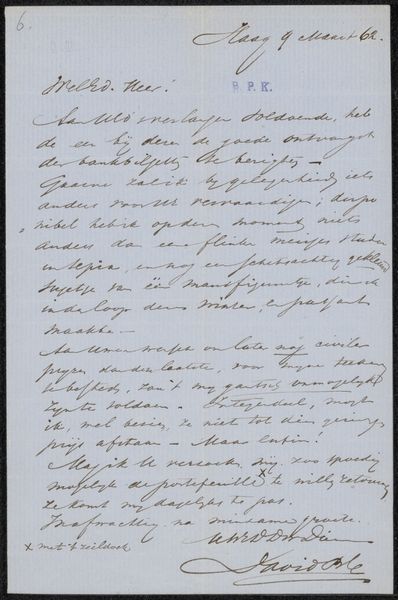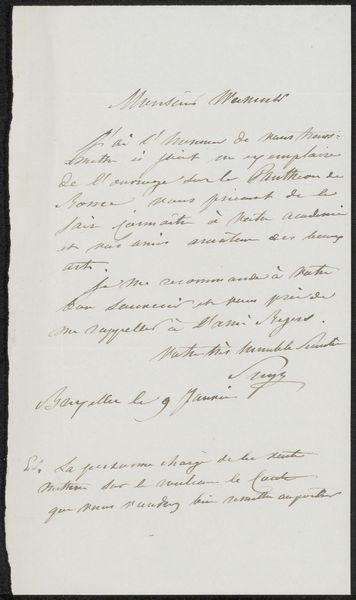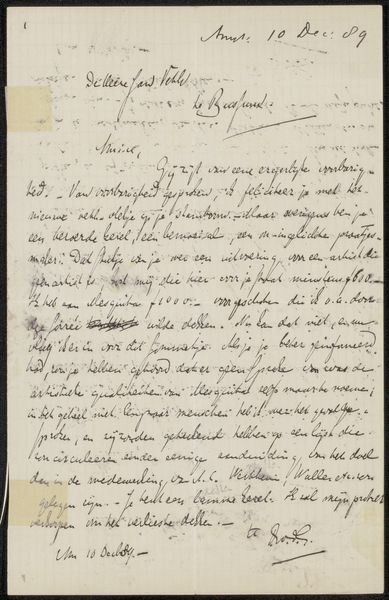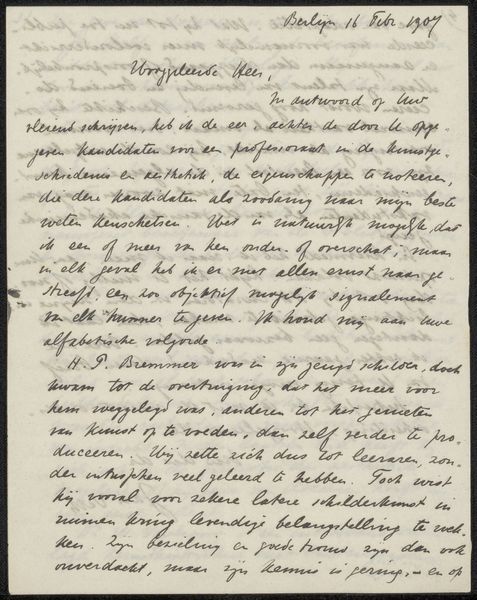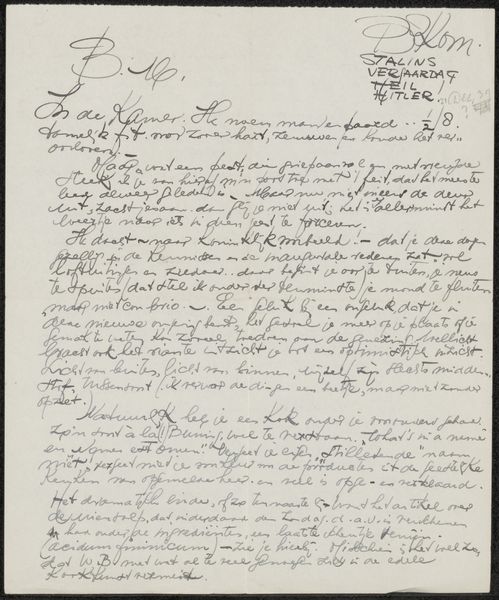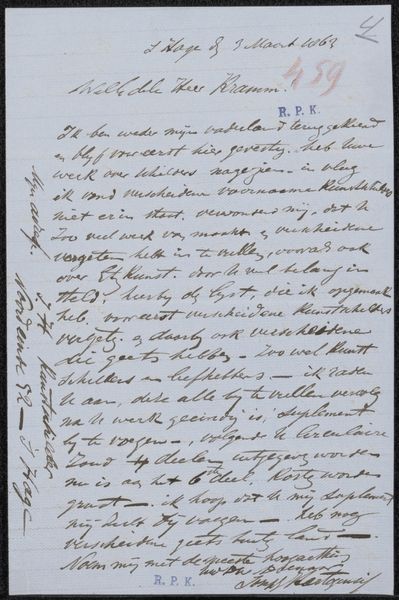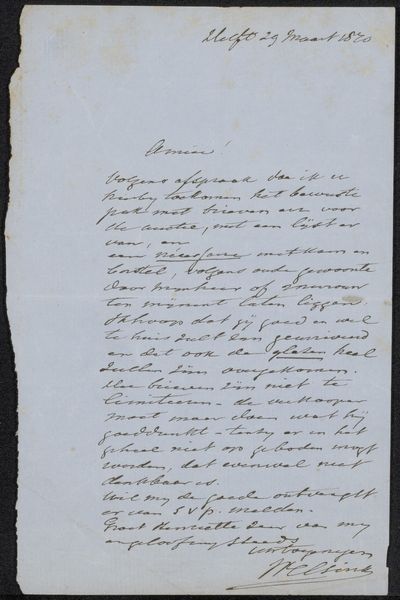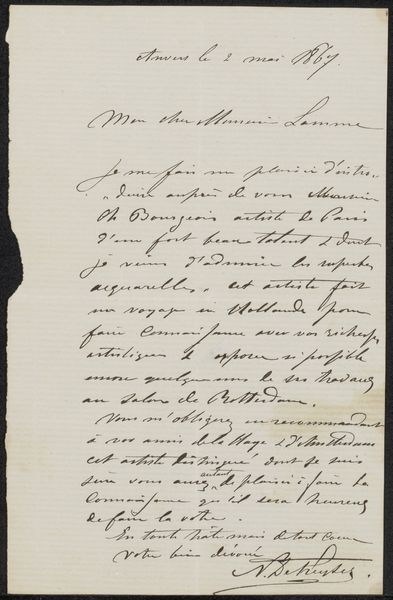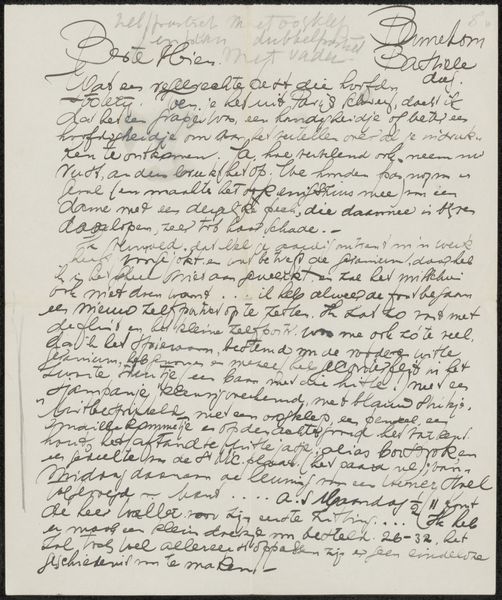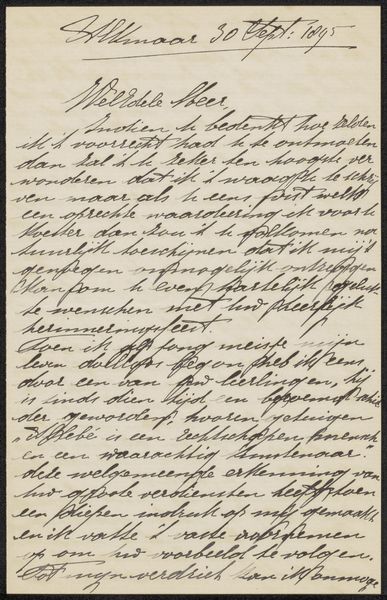
drawing, paper, ink
#
drawing
#
pen drawing
#
pen sketch
#
old engraving style
#
hand drawn type
#
paper
#
personal sketchbook
#
ink
#
hand-drawn typeface
#
pen-ink sketch
#
pen work
#
sketchbook drawing
#
sketchbook art
Copyright: Rijks Museum: Open Domain
Editor: Here we have "Brief aan Jan Veth," possibly from 1908, by P. Cornelis Korteweg. It's a pen and ink drawing on paper, resembling something from a personal sketchbook. The script is quite dense. What social narratives are embedded within this written piece? Curator: I'm immediately drawn to consider the role of correspondence, and particularly the letter, as a historical document, right? These penned lines offer an intimate glimpse into the artist's world, perhaps unveiling artistic networks and social hierarchies of the time. Korteweg's choice of Dutch—did that language itself signify a cultural or political statement? Also, the reference to "mijn broeder" or "my brother," this reference, is it an homage to male artistic legacy? Does it create an erasure of women within his circle? Editor: That's a great point! I hadn't considered the power dynamics at play in choosing who to acknowledge and how. It also raises a question: if this letter exists, were there others that didn’t survive, and what perspectives are lost because of that? Curator: Exactly! The letter prompts us to confront what history chooses to preserve, often marginalizing voices along lines of gender, class, or race. How do we deconstruct the written historical narrative within the framework? Editor: It’s fascinating how much this single letter reveals about social dynamics of the past. Thanks for helping me to consider new contexts. Curator: Absolutely, thinking critically about those elements helps us unearth those marginalized artistic presences and cultural narratives.
Comments
No comments
Be the first to comment and join the conversation on the ultimate creative platform.


